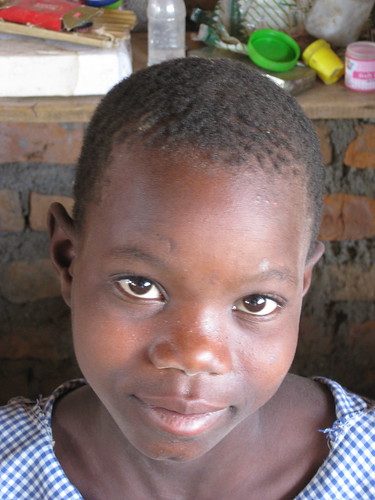 29 July 09
29 July 09
One of the benefits of our schedule here in Mbita has been the chance to visit and speak with teachers and learners before our workshops begin.
Wednesday, we made our visit official with an introduction to John Ololtuaa the District Education Officer (DEO) for the Suba School District.
Ololtuaa lines up nicely with his counterparts in the States. His office was adorned with hand-stenciled charts proclaiming data relating to all facets of running a school district – per pupil spending, mean test scores, administration organizational charts, graduation rates – everything you would expect.
Except.
Last year, 51,757 learners were enrolled in Suba district – a decent number for a moderately-sized community anywhere.
One hundred thirty-four of those 51,757 learners qualified for university.
That’s .2 percent of the total student population.
Kenya’s is an exam-based educational system that would make NCLB run to a corner and cry like a small child.
Learners begin taking exams during Early Childhood Development (ECD) which can be in the form of coloring a picture. Sometimes, a friend Maresa explained to us, this will be over a period of three days where the learner colors a little until she’s tired. Then, she comes back the next day and does a little more, and so on. The big tests come in Class 8 (Grade 8 in the US) and Form 4 (Grade 12 in the US). The Class 8 National Exam determines if a student must remain in Primary School or if they can continue to High School. The Form 4 National Exam determines if a student is eligible to continue on to college.
This is where the exception revealed itself in the DEO’s office.
134.
Of those, 128 were boys.
Do the math.
The answer you’ll find is 6.
Six girls qualified for university intake last year from Form 4. That’s 4 percent of the learners qualifying for university intake.
Dan Otedo, Chairman of the Suba Teacher Guidance and Resource Center, explained that even from that limited pool, many would not have been able to attend because they couldn’t afford it.
Before our meeting with the DEO, Dan told me girls outnumbered boys in the beginning classes of primary school, but that those statistics reversed as the years went on.
According to the DEO’s charts, in the last 8 years, a total of 42 girls have qualified for university intake.
Mama Jane, whose home we’ve been staying in here, works in the local office of the Ministry of Education and oversees ECD in Suba reiterated what many of the teachers we’d meet Wednesday would explain to us.
The fishermen around Lake Victoria entice the girls with gifts of mandazi (a sort of fried doughnut, sanitary napkins, oils and lotions for their skins and various other insignificant sundries. These gifts come with promises of love and caring which often lead to the girls sleeping with the men. Not surprisingly, this often leads to pregnancy – but not always pregnancy.
Charles, a medical anthropologist we met on Mfangano, one of the islands off the coast of Mbita, told us in straightforward language “the fishermen are killing these people.” Mfangano, where Charles had done his graduate research, has a population of 20,000 and a HIV/AIDS infection rate of 30 percent.
Though Kenyans everywhere are embracing the concept of “education for all” most schools charge annual fees for enrollment. This is to say nothing of purchasing uniforms and the other pieces of education.
Because one is rarely ignorant of his own culture, parents of girls here will pay fees for their daughters to get a basic education, but stop because they determine it to be an unwise investment. If she gets pregnant, then all those years of fees are money down the drain.
Boys (and their subsequent inability to have children) are a smarter bet.
Toward the end of the meeting, when I asked about the district’s goals for the future, he said plainly, “We must empower the girl-child.”
Amen.